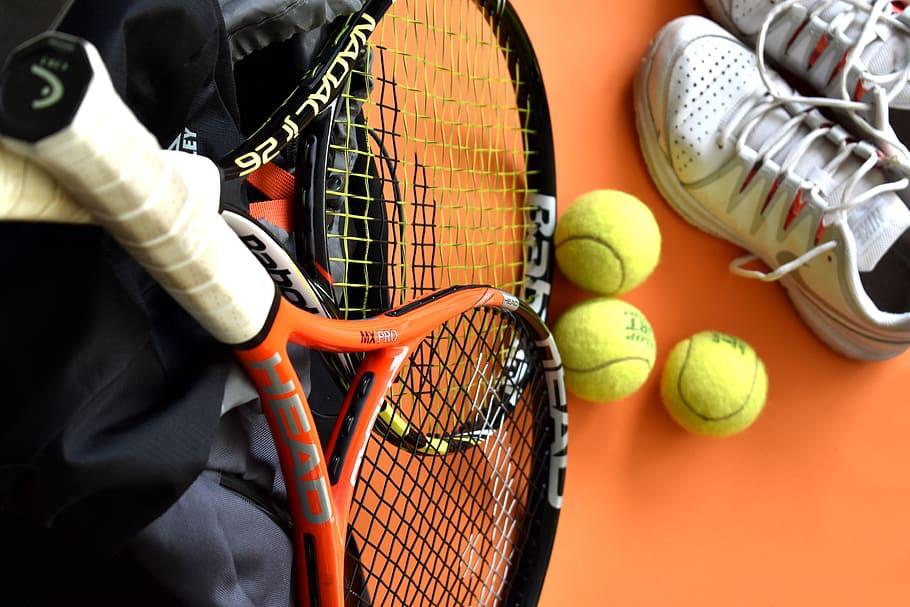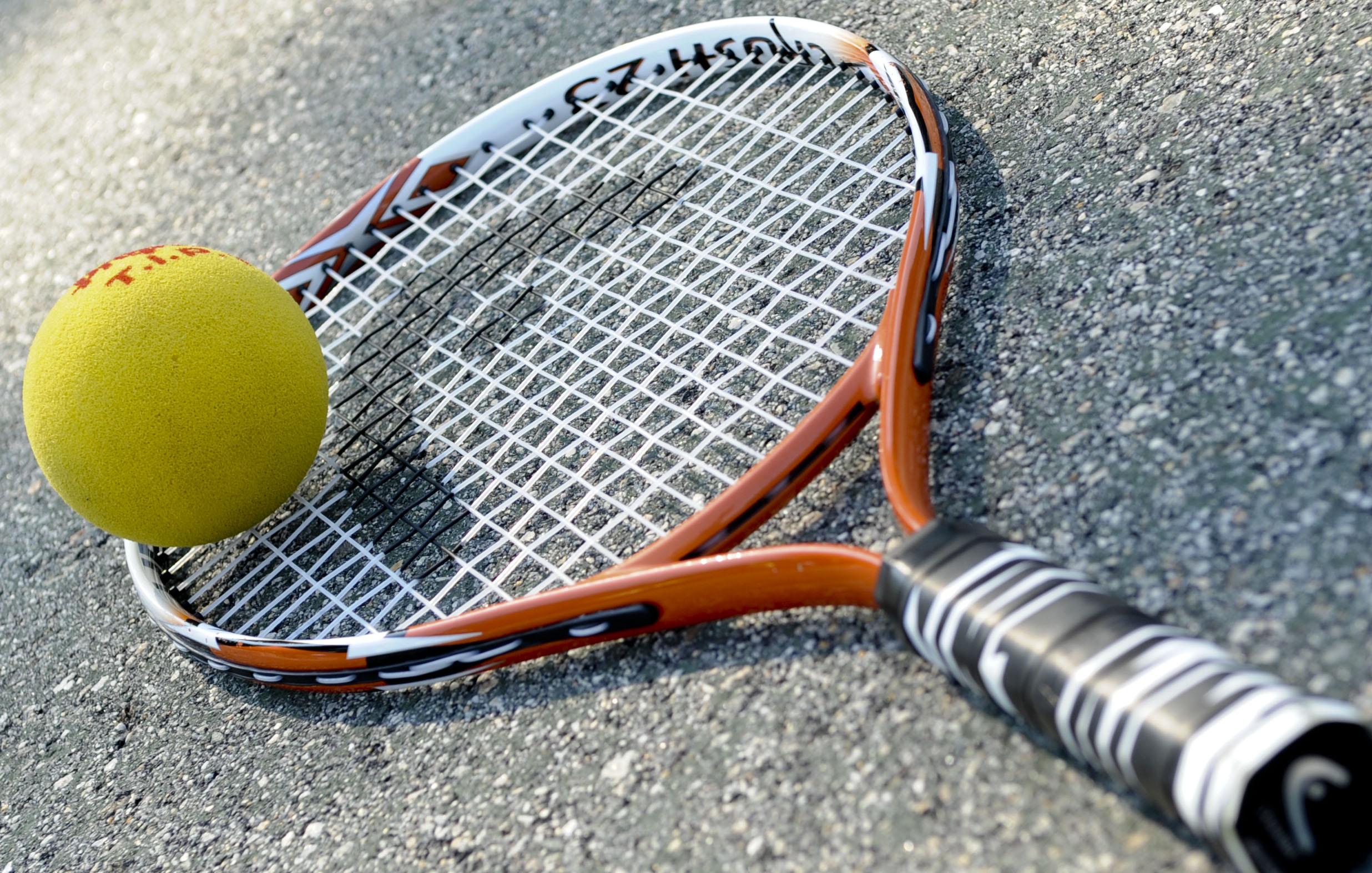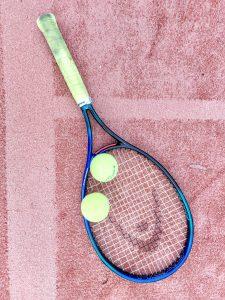We may earn money or products from the companies mentioned in this post.
Brief history of tennis rackets

Tennis rackets have come a long way since their humble beginnings The early versions were made from wood, with strings made of animal intestine or sheep’s gut These rackets were heavy and had a small sweet spot, making it challenging for players to generate power and control the ball
Over time, technological advancements led to the introduction of new materials like aluminum, graphite, and carbon fiber These modern materials revolutionized racket design by making them lighter, more durable, and allowing for larger sweet spots Today’s tennis rackets are a perfect blend of science and innovation
1 Evolution of materials and designs
The transition from wooden rackets to modern-day ones was driven by the need for improved performance on the tennis court The advent of aluminum frames in the 1960s brought about a significant reduction in weight without compromising durability
Graphite rackets gained popularity in the 1980s due to their exceptional strength-to-weight ratio This allowed players to generate more power while maintaining accuracy and control in their shots Carbon fiber was later incorporated into racket construction, further enhancing strength and stability
2 Influence on racket weight
The choice of material directly impacts a racket’s weight, which plays a crucial role in determining player performance on the court Lighter rackets enable players to maneuver quicker with less effort, resulting in faster swing speeds and increased shot-making capabilities
On the other hand, heavier rackets offer more stability during impact with the ball due to their increased mass This can be beneficial for players who rely on power and require extra control over their shots
Importance of racket weight in tennis

Racket weight is an essential factor that can significantly affect a player’s performance and technique on the tennis court It is not a one-size-fits-all concept as individual preferences and playing styles come into play
1 Impact on performance and technique
The weight of a racket directly influences how a player interacts with the ball Lighter rackets allow for quicker reactions, enabling players to reach shots faster and execute swift movements around the court
Conversely, heavier rackets provide more stability during impact, enhancing shot control and reducing vibrations This can be advantageous for players who rely on powerful strokes or prefer a more solid feel during their swings
2 Personal preferences and playing styles
No two players are exactly alike when it comes to their preferred racket weight Some players thrive with lighter rackets, emphasizing speed and maneuverability in their game, while others find comfort in the added weight of heavier rackets that offer enhanced power and stability
Ultimately, finding the ideal racket weight depends on factors such as physical attributes, skill level, playing style, and personal preference Trying out different weights and seeking guidance from professionals can help players discover what works best for them
Factors Affecting Tennis Racket Weight

When it comes to tennis racket weight, there are several factors that come into play The materials used in construction, the racket head size, and the balance point or center of mass all contribute to the overall weight of a tennis racket Understanding these factors can help players choose a racket that suits their playing style and preferences
Materials used in construction
Tennis rackets can be made from various materials such as wood, metal, and composite materials Each material has its own advantages and disadvantages when it comes to weight Wooden rackets tend to be heavier compared to their counterparts made from metal or composites
Advantages:
Heavier rackets provide more stability and power during shots
Disadvantages:
However, they may also require more effort to maneuver on the court, which can be tiring for players
The choice of material also affects the durability and performance of the racket While wooden rackets offer a traditional feel, modern materials like carbon fiber composites provide enhanced strength without compromising on weight
Racket head size
The size of the racket head is another crucial factor influencing its weight distribution Racket heads come in different sizes: midsize, mid-plus, and oversize
Midsize rackets typically have smaller heads and are known for their precision and control due to their reduced sweet spot These rackets generally have a higher concentration of weight towards the handle area
Mid-plus rackets strike a balance between control and power with slightly larger heads than midsize models
Oversize rackets feature larger heads that offer more forgiveness on off-center hits but may sacrifice some control
Balance point or center of mass
The balance point, also known as the center of mass, is the point on the racket where it can be balanced horizontally The location of this balance point affects a player’s ability to generate power and control during their shots
Rackets can be classified as head-heavy or head-light based on their balance point Head-heavy rackets have more weight towards the head, enhancing power and stability but potentially sacrificing maneuverability
On the other hand, head-light rackets have more weight towards the handle, allowing for greater maneuverability and control but possibly reducing power
Conclusion
In conclusion, tennis racket weight is influenced by various factors such as materials used in construction, racket head size, and balance point Each factor plays a role in determining a player’s experience on the court By understanding these factors and considering personal preferences and playing style, players can make an informed decision when selecting a tennis racket that suits them best
Measuring the Weight of a Tennis Racket

When it comes to measuring the weight of a tennis racket, there are various units of measurement that can be used These units include grams, ounces, points, and swingweight Each unit provides a different perspective on the weight of the racket and can help players make informed decisions when choosing their equipment
Types of Measurement Units
1 Grams:
Grams are commonly used to measure the weight of tennis rackets This unit provides a precise measurement and is often preferred by players who want accurate information about their racket’s weight
2 Ounces:
Another commonly used unit is ounces Many players are more familiar with this unit as it is commonly used in everyday life Converting between grams and ounces is relatively simple, allowing players to easily understand the weight of their racket in familiar terms
3 Points:
Points are a unique measurement unit specific to tennis rackets This unit refers to one-eighth (1/8) of an ounce and is typically used when discussing small variations in racket weight or balance
4 Swingweight:
Unlike grams, ounces, or points, swingweight measures the resistance a player feels when swinging the racket through the air It takes into account not only the overall weight but also how that weight is distributed throughout the frame
Converting Between Units
If you come across different units while researching tennis rackets, it’s important to know how to convert between them for better understanding Here’s a quick guide:
- To convert from grams to ounces: divide the number of grams by 2835
- To convert from ounces to grams: multiply the number of ounces by 2835
- To convert from points to ounces: multiply the number of points by 0125
Common Weight Ranges for Different Skill Levels

Now that we understand the measurement units, let’s explore the common weight ranges for different skill levels in tennis It’s important to choose a racket that suits your playing style and skill level for optimal performance on the court
1 Junior or Beginner Players
If you’re just starting out in tennis or are a junior player, it’s recommended to use lighter rackets Lighter rackets provide easier handling and maneuverability, allowing beginners to develop their strokes with greater control and confidence
2 Intermediate Players
Intermediate players usually have a better grasp of the game and are looking for more versatility in their racket choices Medium-weight options are often preferred as they offer a balance between power and control, allowing players to adapt to different playing styles and court conditions
3 Advanced to Professional Players
Advanced and professional players have specific needs when it comes to their equipment They often opt for customized weights based on their individual preferences and playing style These customizations can include adding lead tape or modifying the racket’s balance point, enabling players to fine-tune their performance on the court
Selecting the Right Tennis Racket Weight for You

Choosing the perfect tennis racket weight is crucial to enhancing your game It’s not just about swinging a heavy or light racket; it’s about finding the right balance that suits both your personal preferences and playing style Let’s explore some factors to consider when selecting the ideal weight for your tennis racket
Assessing Personal Preferences and Playing Style
In order to find the right tennis racket weight, you need to assess your personal preferences and playing style Are you more inclined towards a baseline game, focusing on consistent groundstrokes from the back of the court? Or do you prefer an aggressive serve-and-volley approach, rushing to the net after every serve?
Additionally, determining whether you prioritize power or control in your game can also influence your choice of racket weight Some players thrive on generating power through their shots, while others rely on precision and accuracy Understanding these aspects of your playing style will help guide you towards an appropriate racket weight
Trial-and-Error Approach to Find the Perfect Fit
Finding the perfect tennis racket weight often requires a trial-and-error approach Before making a purchase, it’s essential to try out various racket models with different weights This hands-on experience allows you to feel how each racket performs in terms of maneuverability and stroke execution
If none of the off-the-shelf options seem quite right, don’t worry! You can always make adjustments using customization options like lead tape or even seek professional help for specific modifications tailored to suit your needs
Consulting with Coaches or Professionals
When it comes to selecting a tennis racket weight, seeking advice from coaches or professionals can provide valuable insights Experienced players who have been through similar decision-making processes can offer guidance based on their own experiences
Coaches or professionals can also help you adapt to changes in your skill level and physical capabilities As you progress as a player, your needs may evolve, and having expert advice ensures that you stay on top of your game
In conclusion, selecting the right tennis racket weight is a significant decision that can greatly impact your performance on the court By considering personal preferences, playing style, and seeking professional advice when needed, you’ll be well-equipped to make an informed choice that enhances your tennis game
Useful Links

Tennis Racket Swingweight Explained
How Do You Know If Your Tennis Racket Is Too Heavy?
5 Biggest Mistakes when Buying a Tennis Racket
How to Pick the Right Tennis Racket Weight? – YouTube
Is your racquet too heavy? – YouTube
Is 300g tennis racket too heavy?
Pro Tennis Racket Average Weight (ATP and WTA)
How to choose a tennis racket
How to pick the right tennis racket for kids
Are Lighter Tennis Rackets Better Than Heavier Ones?
Choose the weight of your tennis racket
Tennis Racket Weight & Balance | Guide
Guide to Tennis Racket Specifications
What Are the Benefits of a Heavier Tennis Racket?
Is it generally better to use a heavier tennis racket?
Head Heavy, Head Light and Even Balanced …
lianth Tennis Racket Weight Training Aid Racquet …
How do I choose a racquet?
Racquet Power and the Ideal Racquet Weight






